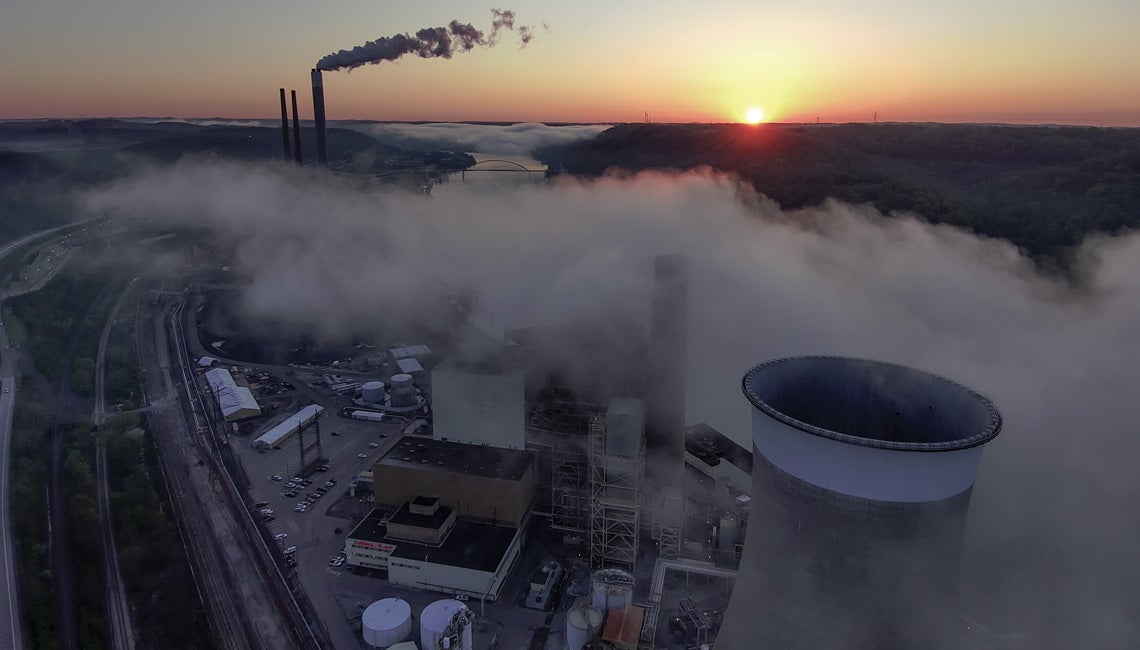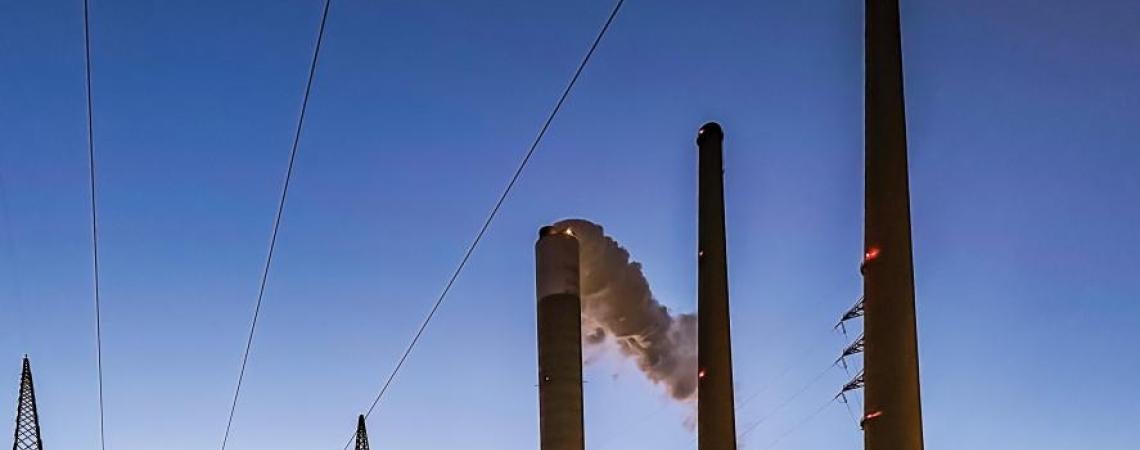Electric-industry leaders nationwide are pushing back against the U.S. Environmental Protection Agency’s recently announced regulations that those leaders say are a threat to the reliability and affordability of electricity in the U.S.
The new EPA rules are meant to drastically reduce carbon dioxide (CO2) emissions from the baseload generation sources that provide economical 24/7 power across the country — including the Cardinal Power Plant in Brilliant, the Ohio electric cooperative member-owned facility that supplies electricity to more than 1 million people in 77 of Ohio’s 88 counties and employs more than 300 people.
The Cardinal Power Plant in Brilliant, Ohio, supplies electricity to more than 1 million people in 77 of Ohio’s 88 counties.
One of the new rules would require Cardinal and other coal-fired plants to be 90% carbon-emission free by 2032 and points to carbon capture and sequestration — technology that does not and is not likely to exist at a scale that would be necessary — as a means to achieve it. Generating facilities unable to meet the demands would be forced to close.
“The rule mandates the use of unproven technologies and sets unattainable compliance limits on power plants,” says Pat O’Loughlin, president and CEO of Ohio’s Electric Cooperatives, which owns and operates the Cardinal Plant. “The regulations are unrealistic and unachievable.”
Raising the alarm
Co-ops, as well as attorneys general from 27 states (including Ohio), also contend that the rule is unlawful, and have filed a lawsuit in the U.S. Circuit Court of Appeals to block it. They contend the EPA is using its rules to transform the economy, which not only violates the Clean Air Act, but also ignores the U.S. Supreme Court decision that struck down a similar EPA overreach in 2022.
O’Loughlin and electric utility leaders from around the nation have been raising the alarm since the rule was first proposed. The North American Electric Reliability Corporation (NERC), the PJM Interconnection (PJM), the Mid-Continent Independent System Operator (MISO), the Electric Power Research Institute (EPRI), and the National Rural Electric Cooperative Association (NRECA) — all of which have an interest in or responsibility for maintaining a reliable electric grid — provided input to the EPA during the public comment phase, all pointing out problems with the rule.
Even investor-owned utilities, which stayed mostly silent in previous EPA attempts to hamstring coal-fired power, have pushed back on the rule. Duke Energy, which serves about 8.4 million customers in North Carolina, South Carolina, Florida, Indiana, Ohio, and Kentucky, issued a statement saying the new rule presents “significant challenges to customer reliability and affordability — as well as limits the potential of our ability to be a global leader in chips, artificial intelligence, and advanced manufacturing.”
Supplying the demand
The Energy Information Administration projects that power demand will reach record highs in 2024 and 2025, increasing by 2.5% and 3.2% respectively. Grid planners forecast electricity demand, thanks in large part to new AI data centers, increasing use of electric vehicles, and new manufacturing facilities, to grow by 38 gigawatts through 2028 — the equivalent of adding another California to the grid.
“This trend is a welcome indicator of innovation and a growing economy that will strengthen America’s position in the world,” says Michelle Bloodworth, president of America’s Power, a partnership of industries involved in producing electricity from coal. “At the same time, it means that we need more sources of dependable and affordable electricity, not fewer.” Bloodworth says utilities have already announced plans to shut down more than 60,000 megawatts of coal-fired generation over the next five years — enough to power 600 data centers or more than 60 million homes.
“The rule undermines electric reliability and poses grave consequences for an already-stressed electric grid,” says Jim Matheson, CEO of the NRECA. “The American economy can’t succeed without reliable electricity. Smart energy policy recognizes that fundamental truth and works to help keep the lights on. I don’t think anyone at the EPA thought about reliability.”
A better way
Matheson stresses that the industry in general, and electric co-ops in particular, are not against progress, including environmental progress. Ohio’s electric cooperatives, for example, spent more than $1 billion on emission controls at Cardinal Plant since 2012, and as a result, the plant has been recognized as one of the cleanest-operating coal plants in the world.
Co-ops are also sponsoring partners of the National Carbon Capture Center and the Wyoming Integrated Test Center, and members have been actively engaged in the research and deployment of CCS in no less than five of the largest such projects anywhere.
Matheson also pointed to the U.S. Department of Agriculture’s new $9.7 billion Empowering Rural America (New ERA) program, designed specifically to help co-ops build and invest in clean energy resources. The voluntary program drew more than double the expected participants and $26 billion in project applications that would launch $93 billion in investments across rural America.
“Electric co-ops are answering the call for innovation,” Matheson says. “We are going to continue to be the voice advocating for rational policy in terms of making sure when our members at the end of the line flip the switch, the light comes on, and when the bill comes at the end of the month, they can afford to pay it.”
What you can do
As a member of an electric cooperative, you can stand up for energy reliability.
Join other cooperative members from around the country to advocate for responsible energy policy through Voices for Cooperative Power.
Visit https://voicesforcooperativepower.com to learn more about this grassroots effort. If you’d like to amplify your voice through political support for reliable energy advocates, join America’s Electric Cooperatives PAC, which financially backs candidates who support the interests of electric cooperative members.
Call your cooperative to join.










